Ethiopian coffee beans are graded system Ethiopian coffee beans story and flavor
Professional coffee knowledge exchange more coffee bean information please follow the coffee workshop (Wechat official account cafe_style)
The genetic complexity of Ethiopian coffee varieties, coupled with diversified treatments such as sun exposure and washing, presents a complex and changeable flavor, which is favored by many coffee gluttons. Qianjie coffee but Ethiopian beans on the shelves account for 30-40% of the beans on the shelves. You can imagine how popular Ethiopian beans are. Among them, the coffee beans in Yejasuefei and Sidamo producing areas are the beginning for many people to know Ethiopian coffee beans, and there are also coffee rookies who come to Qianjie and don't know what to drink. Qianjie baristas will recommend beans from this producing area as coffee rookies'"appetizers."
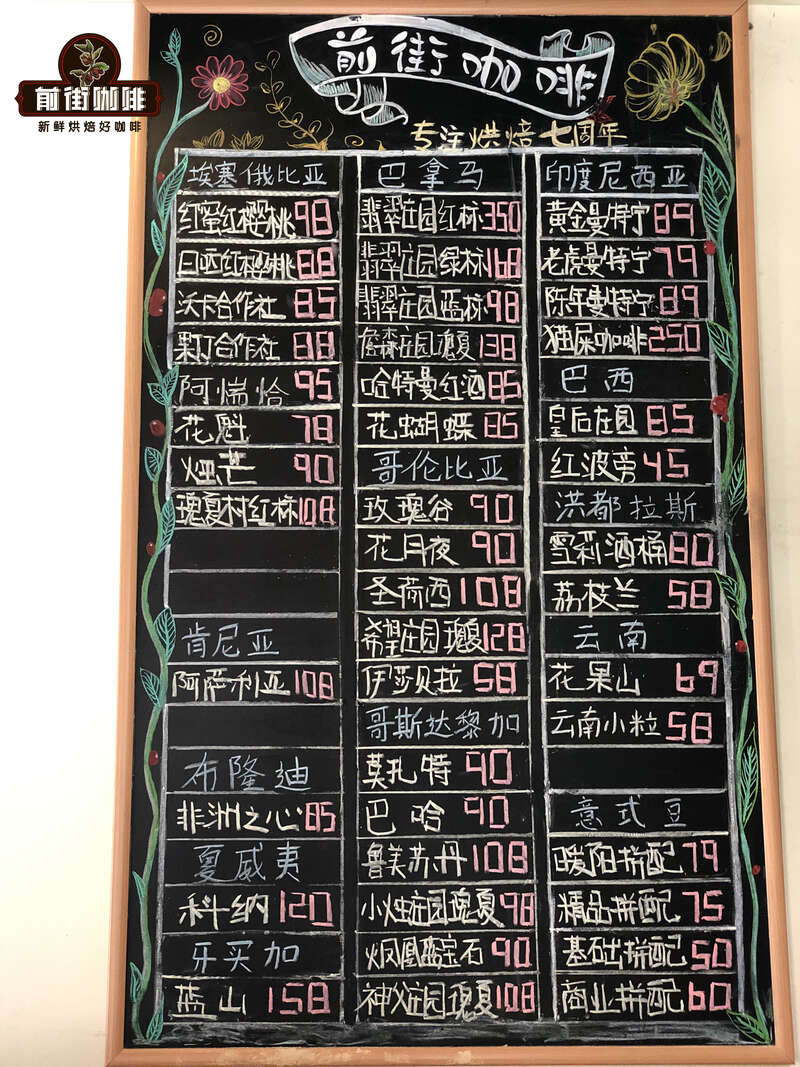
Coffee producing area
There are a total of nine coffee producing areas in Ethiopia: Sidamo, Yeru Sheffihara, Forest, Irubabo, Kinby, Tibby, Bebeca and Jinma. Among them, Yega Xuefei, Sidamo, Lim and Hara belong to Ethiopian boutique coffee producing areas.
Yirga cheffe is a small town in Ethiopia with an elevation of 1700-2100 meters. It is one of the highest coffee producing areas in the world and is synonymous with Ethiopian boutique coffee. The Rift Valley, represented by Misty valley, is foggy all the year round, like spring all the year round, with a gentle breeze, cool and humid, and thousands of coffee trees thrive, giving birth to the unique and unpredictable flavor of Yega Xuefei, which is intertwined with flower and fruit aromas. The former street sensation believes that the so-called Yega Chuefei flavor refers to the rich citrus lemon fruit acid, rich jasmine aroma, light and elegant taste, with a sense of tea, and tastes like fresh and clean lemon tea.
Sidamo (Hidamo) is a province of Ethiopia and the superior administrative unit of the famous Yegashafi. Sidamo is the southernmost coffee producing area in Ethiopia, with an average elevation of 1400-2000 meters above sea level. The coffee produced is obviously sweet, known as sweet coffee. Qianjie believes that sunny Sidamo has a light floral aroma, rich berry acidity and a sense of fermentation, which is smoother than that of washed Sidamo.
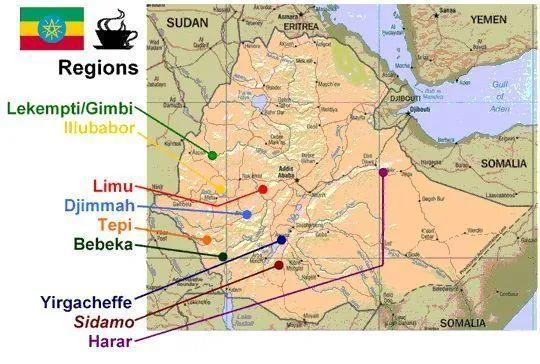
Limu grows in the east of Jima and north of Sidamo in the southern western highlands of Ethiopia (border of Shewa and Sidmo provinces). Most of the coffee beans are washed. The front street thinks that the coffee flavor of Lim is different from that of Yega Xuefei and Sidamo. The body viscosity of coffee beans in Lim producing areas is significantly lower, and the performance of floral and citrus acid is not as good as that of Yega and Sidamo, cutting more aromas of grass and black sugar. The fruit is sour and bright.
Harrar, located in eastern Ethiopia, is an ancient city with a long history and one of the four holy cities of Islam. It is subdivided into four smaller areas: East Harar, West Hara, Bell and Arsi. Hara stretches through the desert to the border, and to the east is Somalia, where coffee growth is concentrated in the highlands, in a slow downward arc from Diledawa and Harald to the south and west. Because coffee usually grows at higher elevations, people usually have to come down from the hillside to get to the coffee farm. In addition to the famous aroma of Hara coffee beans, Qianjie feels that the defective beans of Hara coffee beans are clean, and it is easy to drink berry aromas and pleasant fermented aromas.
Coffee cultivars
Yega Xuefei coffee variety is a local native species, Heirloom native species this variety, most Ethiopian coffee varieties will be named after this name, in fact, because Ethiopia has too many varieties, it is like the natural gene bank of Arabica, on the one hand, there are many varieties, and it is difficult to identify and classify them, on the other hand, the Ethiopian government is not willing to disclose the information of these varieties for the sake of protection, so it is collectively called the original species of Heirloom. The original species are genetically complex, and through different planting areas and treatments, the flavor of coffee can range from rough miscellaneous flavors to charming floral aromas, citrus acid, berry cats, tea, honey and so on.
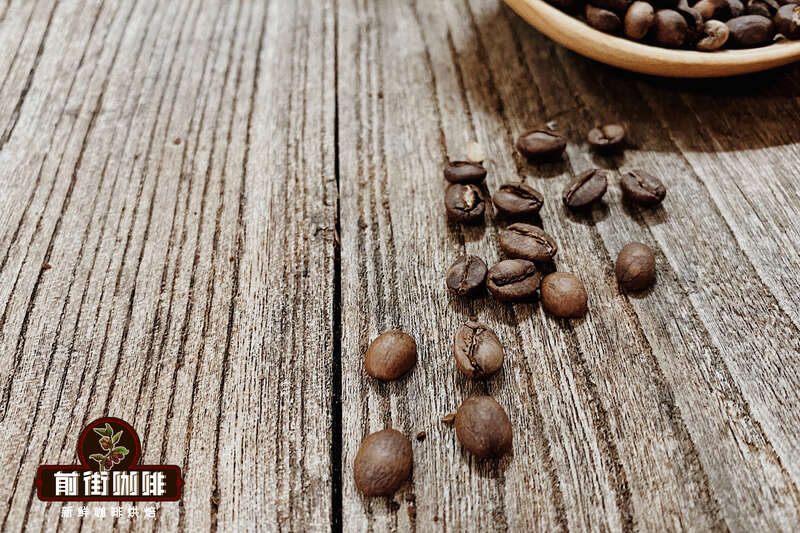
Coffee bean treatment
Traditionally, Yega Xuefei uses the oldest sun treatment, but in 1972, Ethiopia introduced Central and South American water washing technology to improve the quality of coffee, which made the jasmine and citrus fragrance clearer and brighter. Qianjie coffee believes that the most essential difference between water washing and tanning. Water washing is the most basic flavor of coffee, which can most directly reflect the special flavor of the producing area. On the other hand, the solarization method will add sweet aroma and fermented feeling to this basic flavor.
Washing treatment: the selected coffee cherries were put into the peeling machine to remove the peel and pulp. Put the coffee beans with residual pectin into the water and let them ferment for 18-36 hours. After fermentation, the raw coffee beans with parchment are washed in a flow tank to remove the pulp and pectin. After washing, dry the coffee beans or dry the coffee beans with the help of a dryer to reduce the moisture content to about 12%, and finally remove the parchment of raw coffee beans.
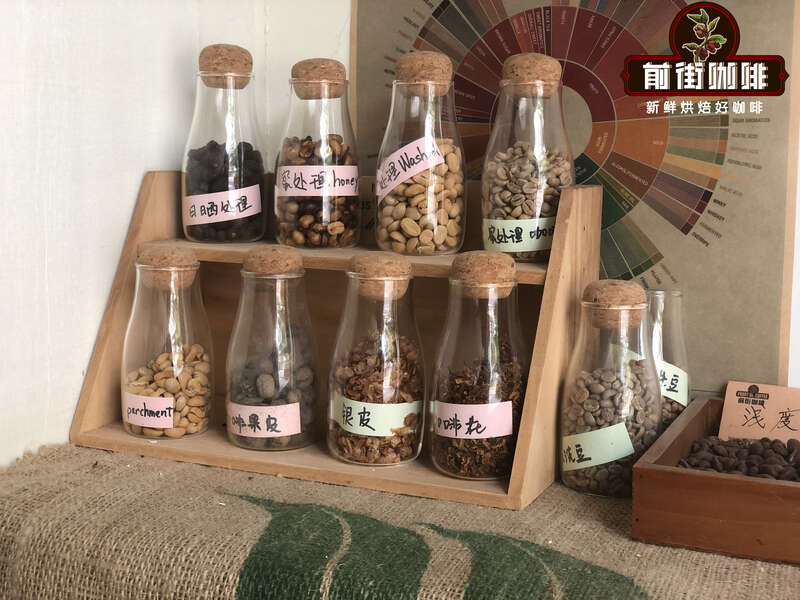
Sun treatment: during the coffee harvest period, farmers only pick ripe red fruits and put them in the basket one by one. The picked coffee fruit has uniform size, similar maturity and no other impurities. In the process of treatment, it is necessary to manually screen defective coffee beans and immature or overripe coffee fruits. Then lay the coffee red fruit on a high wooden frame or whole scaffolding to make the sun, so as to avoid the risk of beans smelling on the ground. In the process of exposure, it will constantly turn to ensure that the coffee beans can be evenly exposed to water; every three to five days, farmers will manually screen out the defective and moldy beans.
Classification of Ethiopian coffee beans (graded in proportion to defective beans)
Before the emergence of the Ethiopian Commodity Exchange (Ethiopia Commodity Exchange referred to as ECX), Ethiopia's coffee export grade was established by the CLU Department of the Ministry of Agriculture (Cupping and Liquoring Unit), which mainly graded coffee raw beans according to the number of defective beans in 300g, as shown in the table below. General washing treatment is G1-G2, due to the technical problems of sun treatment at that time, the number of defects of raw sun beans is relatively large, generally G3-G5, with the improvement of sun treatment technology, now the sun beans can also reach the G1-G2 level.
Grade
Number of defective beans (per 300g)
Grade1
≤ 3
Grade2
4-12
Grade3
13-25
Grade4
26-45
Grade5
46-90
Among them, boutique and commerce are aimed at the export international market. ECX divides coffee raw beans into nine grades according to the total score of physical attribute characteristics and cup test flavor characteristics, of which the physical feature score accounts for 40% and the cup test mass score accounts for 60%.
Physical characteristics (40%):
Washing treatment: number of defects (20%), appearance size (10%), color (5%), smell (5%)
Non-washing treatment: number of defects (30%), odor (10%)
Grade
Washing / non-washing fraction
Grade1
91-100
Grade2
81-90
Grade3
71-80
Grade4
63-70
Grade5
58-62
Grade6
50-70
Grade7
40-49
Grade8
31-39
Grade9
20-30
Then the G1-G3 was tested again according to the SCAA standard, and its flavor properties were evaluated in more detail, and the G1 and G2 were rated as Q1 for no less than 85, Q2 for G1 and G2 G3 between 80 and 85, and G3 for all G1Magi G2 G3 below 80.
Q1 and Q2 are classified as boutique grade exports. G4-G9 remains unchanged and is classified as commercial grade export together with G3.
The coffee beans in the Ethiopian region of Qianjie are the most representative of Guotintin from Yega Chuefei and the sun Arsi from Sidamo.
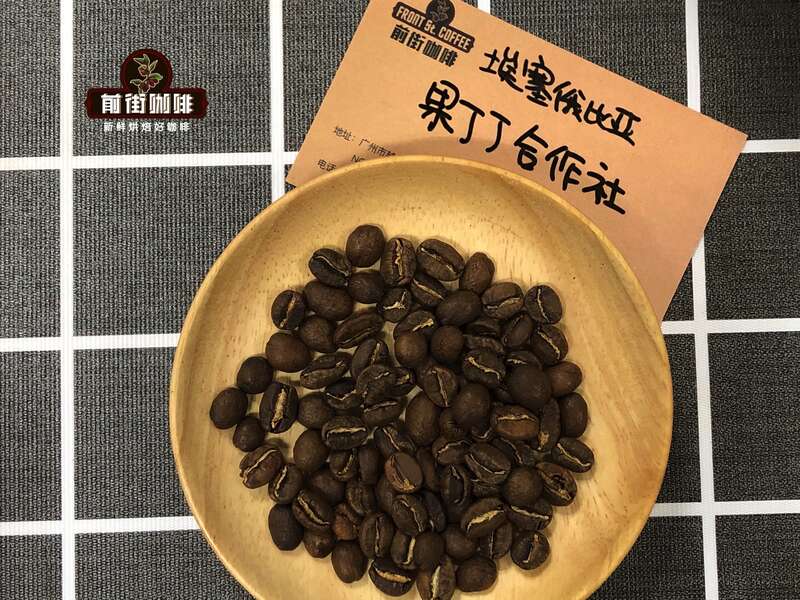
Producing area: Yega Xuefei Gedeo Zone producing area
Altitude: 1900-2300m
Variety: original species (Heirloom)
Treatment: washing treatment
Grade: G1
The Yega Sheffield Guoding Cooperative, located in the Waka producing area at the southeast end of Yega Sheffield, was originally part of the Waka Cooperative under the YCFCU of the Yega Sheffield Alliance. Later, with the pursuit of traceability of raw coffee beans, the "single producing area" was excavated by coffee hunters all over the world. In 2012, Guodingding, which has about 300 farmers, independently set up the "Guodingding Cooperative". Guodingding Village was the first independent village area, and many small farmers were also members of the Waka Cooperative, so the technology of producing coffee was not to mention. The main treatment methods of Guodingding cooperative are washing and sun treatment.
Qianjie baking suggestion
Yangjia 800N: furnace temperature to 175C ℃ into the pot, throttle open 3, firepower 120; tempering point 1140℃ firepower unchanged, throttle open to 4; at this time the bean surface turns yellow, the smell of grass completely disappears, entering the dehydration stage, when firepower drops to 100176 ℃ at 166℃, the firepower drops to 80, and the throttle remains unchanged.
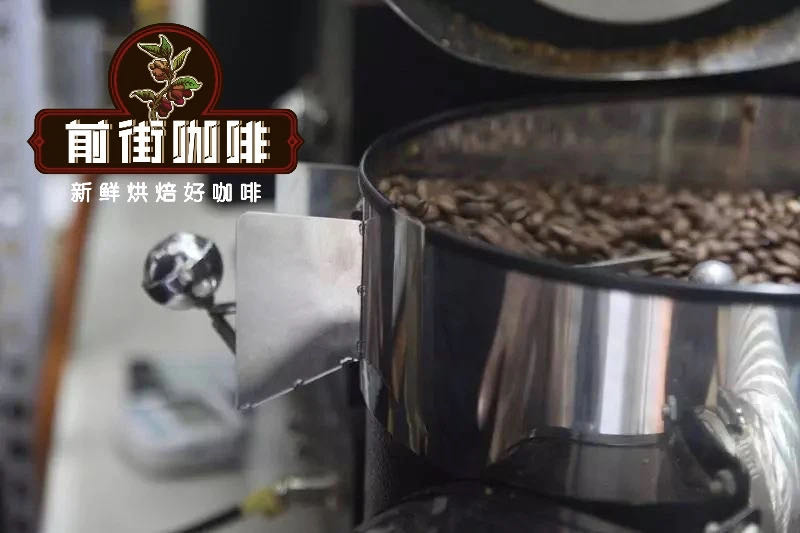
The smell of toast obviously changes to the smell of coffee, which can be defined as a prelude to an explosion. At this time, it is necessary to listen carefully to the sound of the explosion point. When the sound of the explosion starts, adjust the throttle to 5 (the tuning power should be very careful, not so small as to be so small that there is no burst sound). After an explosion, the development of 1 cup 39th 30 ", 193.5 ℃ into the pot.
Qianjie Cup test report
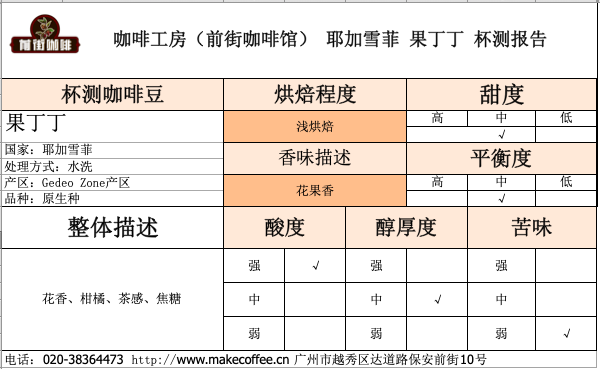
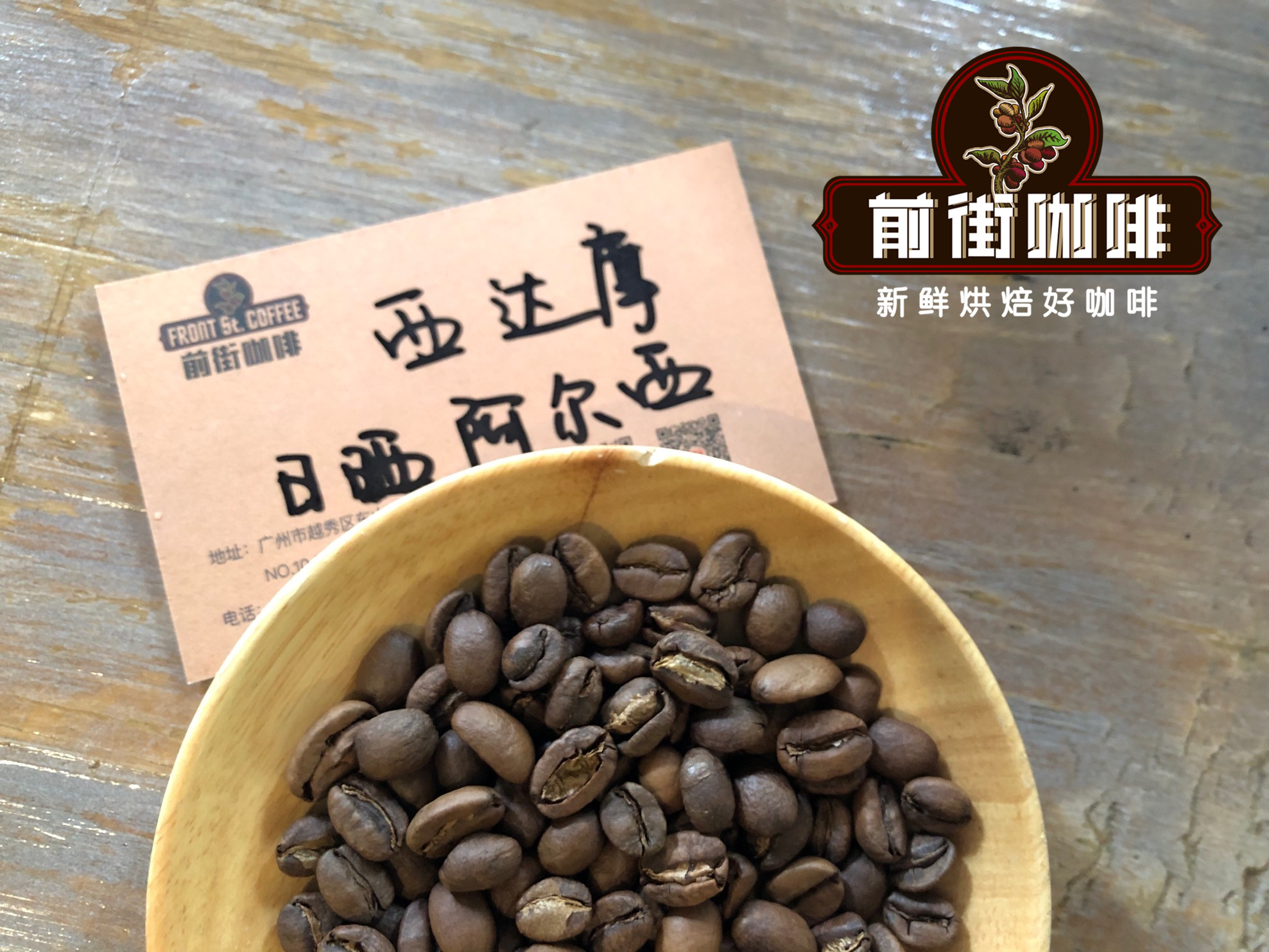
Producing area: Arsi producing area of Sidamo
Altitude: 1900-2200m
Variety: original species (Heirloom)
Treatment: sun treatment
Grade: G1
Qianjie baking suggestion
The furnace temperature reaches 160℃ into the pot, the throttle opens 3, the firepower is 120; the temperature of the furnace is 115℃, the firepower remains the same, the throttle opens to 4; at this time the bean surface turns yellow, the smell of grass disappears completely, and enters the dehydration stage, the firepower rises to 140at 130℃, the throttle remains unchanged.
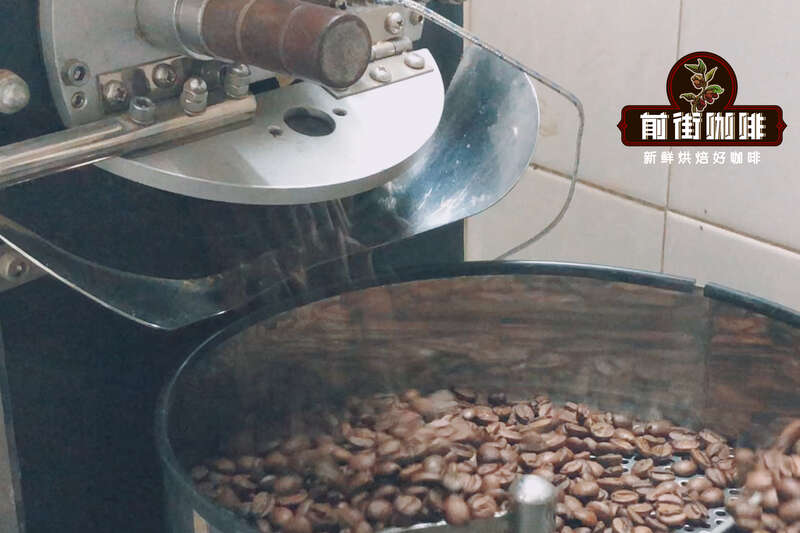
The smell of toasted bread has obviously changed to the smell of coffee, which can be defined as a prelude to an explosion. At this time, it is necessary to listen carefully to the sound of the explosion point, and it will start to explode at the time of the explosion. After the explosion, the development of the explosion will take place at 193.5 ℃.
Qianjie Cup test report
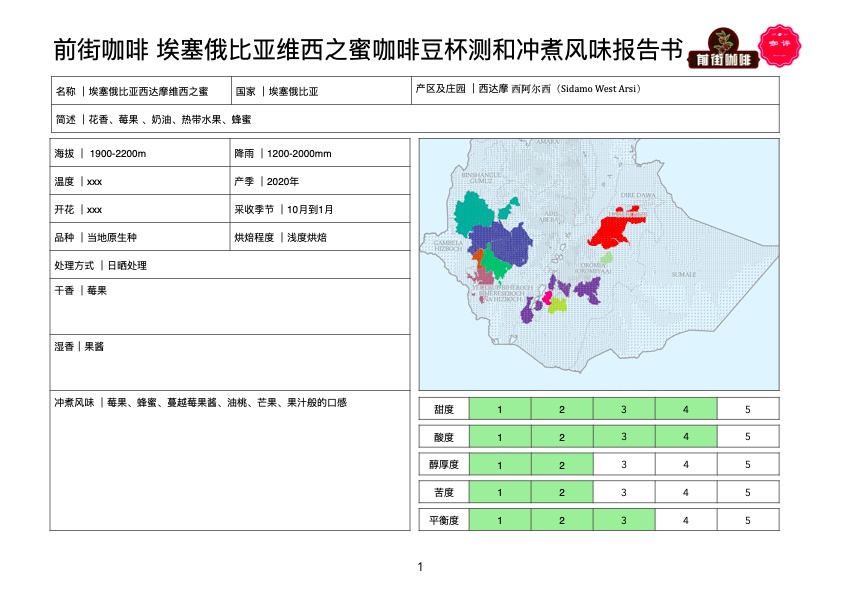
Recommendation of parameters for cooking Ethiopian coffee beans in Qianjie
Recommended cooking method: hand flushing
Filter cup: Hario V60
Water temperature: 90 ℃
Amount of powder: 15g
Powder / water ratio: 1:15
Degree of grinding: medium and fine grinding (Chinese standard No. 20 screen pass rate 80%)
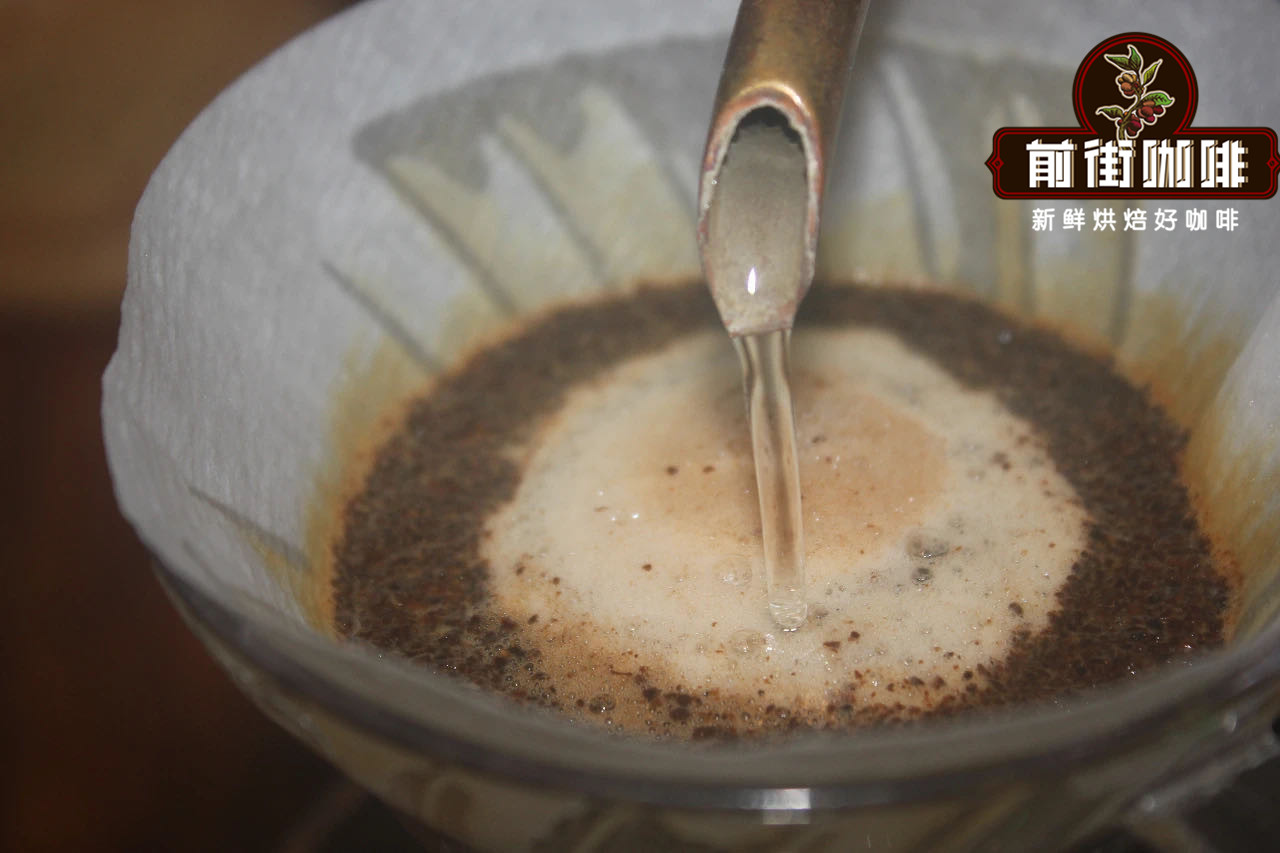
Step-by-step cooking technique: steaming with 30 grams of water for 30 seconds, small water injection around the circle to 125 grams for stages, water level drop to 225 grams when the powder bed is about to be exposed, remove the filter cup when the water level drop is about to expose the powder bed, (steaming starts timing) the extraction time is 2 grams 39th 00 "- 2 grams 39th 10".
Fruit dingding flavor: the overall taste is solid, fermented and tropical fruits are more prominent, with the change of temperature, showing the flavor of berries and cream, and the sweet and sour feeling of citrus staying between the teeth and lips is more lasting.
Arsi cooking flavor: berry, honey, cranberry jam, nectarine, mango, juice-like taste.
For more boutique coffee beans, please add private Qianjie coffee on Wechat. WeChat account: kaixinguoguo0925
Important Notice :
前街咖啡 FrontStreet Coffee has moved to new addredd:
FrontStreet Coffee Address: 315,Donghua East Road,GuangZhou
Tel:020 38364473
- Prev
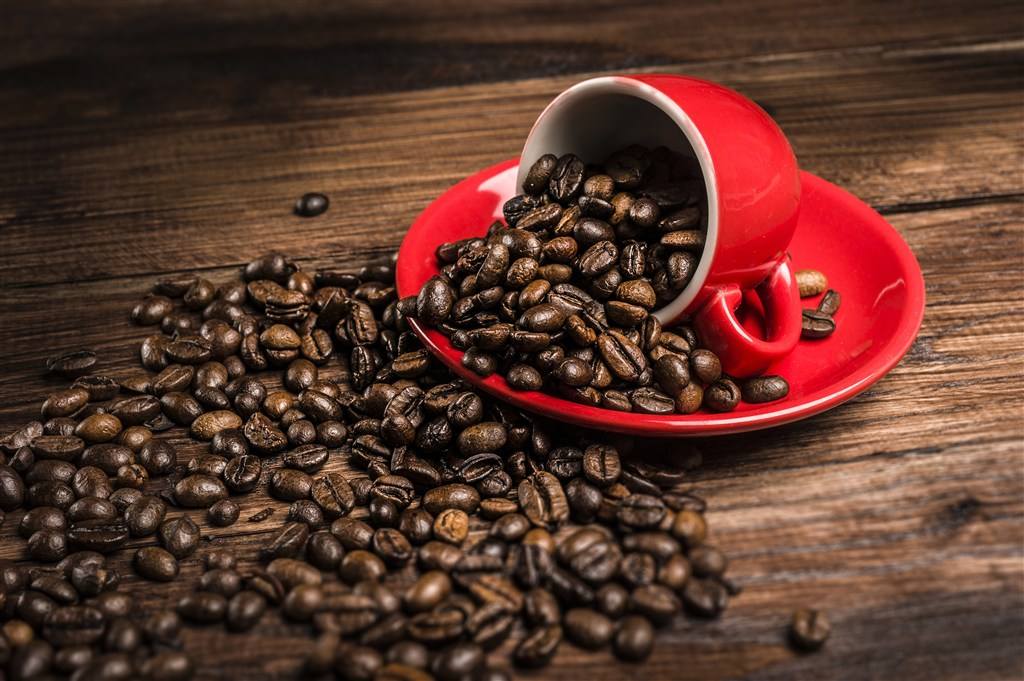
The History of Coffee in Ethiopia
Following Ka Pai (Wechat official account vdailycom) found that the beautiful cafe opened a small shop of its own and there is a place called Kafa in Ethiopia. Local residents have found that cattle and sheep become excited, powerful and a little crazy after eating a plant with little red beans. Someone picked the red bean and tried to chew it a little. It tasted good, and then it changed slowly.
- Next
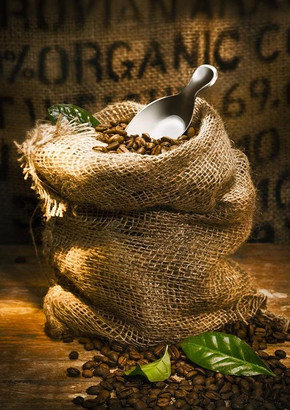
What are the advantages of Jamaican coffee
Following Cafe Review (official Wechat account vdailycom) found that Beautiful Cafe opened its own small shop with mellow flavor and strong stamina. The trick is to choose high-quality Jamaican brown rum, which has the best effect. It tastes strong and sweet. Materials: iced coffee 5OZ, Brandy 1/2OZ, 7-UP soda, ice cubes, 1 small plate of peanuts. First in the program cup
Related
- Detailed explanation of Jadeite planting Land in Panamanian Jadeite Manor introduction to the grading system of Jadeite competitive bidding, Red bid, Green bid and Rose Summer
- Story of Coffee planting in Brenka region of Costa Rica Stonehenge Manor anaerobic heavy honey treatment of flavor mouth
- What's on the barrel of Blue Mountain Coffee beans?
- Can American coffee also pull flowers? How to use hot American style to pull out a good-looking pattern?
- Can you make a cold extract with coffee beans? What is the right proportion for cold-extracted coffee formula?
- Indonesian PWN Gold Mandrine Coffee Origin Features Flavor How to Chong? Mandolin coffee is American.
- A brief introduction to the flavor characteristics of Brazilian yellow bourbon coffee beans
- What is the effect of different water quality on the flavor of cold-extracted coffee? What kind of water is best for brewing coffee?
- Why do you think of Rose Summer whenever you mention Panamanian coffee?
- Introduction to the characteristics of authentic blue mountain coffee bean producing areas? What is the CIB Coffee Authority in Jamaica?

